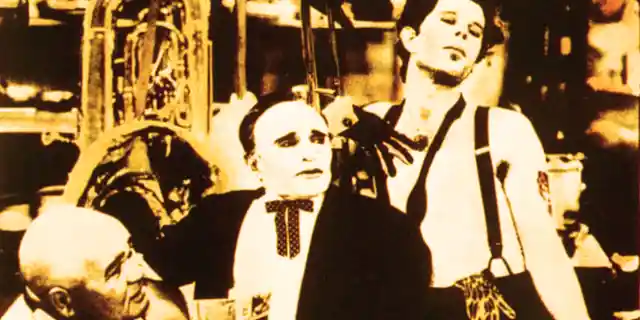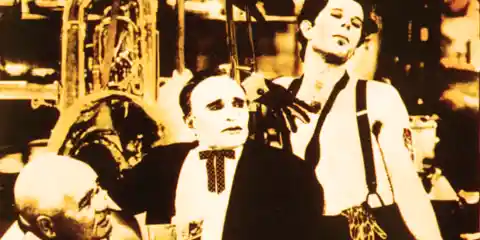

Eight albums in and we’ve gone from a quiet little bar in any town USA steeped in nostalgia and sweetness, to something else entirely. It was building from the start and although that only comes through in hindsight and by looking at the trajectory of his career, it doesn’t seem completely shocking that Tom Waits would end up making an album like Swordfishtrombones in 1983. Rising out of the jazz, blues and pop traditions he explored in previous albums, this is a theatrical reconstruction of those genres by way of a junkyard.
The album kicks off with the stop motion percussion of “Underground,” setting the stage for this collection of songs made of things that the mainstream has discarded or buried. There’s an immediate pieced together feel to the sound with what could be various cans and bottles being used for percussion and a guitar that could be playing on the couple of random strings left on it after it was thrown away. And yet somehow the music is cohesive and there is a melody there that is almost recognizable as jazz or blues or perhaps something more primal. This is the first album Waits produced himself and it’s striking how different it is. There were hints of this sound here and there before this album, but here, up front and in your face, it truly is awesome.
And yet, the old jazz poetry that Waits is so damn good at is still here. We see it in tracks like “Shore Leave,” a song that somehow manages to be breezy and smooth amid the refuse of the seemingly random instrumentation. There’s a feeling here that this music and these feelings cannot be contained and the characters we encounter are expressing themselves by any means they know how. It’s similar to the feeling I got when I saw Stomp many years ago; music exists everywhere if you want it to.
While there is a bit of the traditional in tracks like “Johnsburg, Illinois” these moments are fleeting. All the songs are short, many of them under a minute and any quiet moments are quickly punctuated by a more rhythmic, banging and clanging track like “16 Shells From a 30.6.” What comes through clearly in this album, even more so than in his previous work, is that Waits is in the same league as Cole Porter, the Gershwins, and other song writers of that era. Any impression that he may have just been aping their styles has to go out the window when he does something so different that still brings to mind pop standards of the 40s.
“In the Neighborhood” somehow paints a Norman Rockwell-worthy portrait from a mundane and maybe not ideal neighborhood. In this neighborhood, the kids can’t get ice cream because the market burned down and there’s always construction going on, but it’s still home. If I had to pick one thing Waits does better than anybody else, it’s understanding humans. Whether it’s this neighborhood or the regulars of the skid rows he sings about, he’s never looking from the outside in. Instead of judging, he reveals the truths that are covered in mud, even if he doesn’t explicitly name them. The quick, witty poem “Frank’s Wild Years” features the best line I’ve ever heard. “Frank settled down in the Valley and he hung his wild years on a nail that he drove through his wife’s forehead.” This is the sort of sentence we would have talked about for hours back in my literature courses in college. It’s all there, the whole story, without judgment.
As real as his characters can be however, there is a sense of legend in them. These tales that are passed along in his songs are like stories told at bars and the title track of this album reminds us “perhaps this yarn’s the only thing that holds this man together, some say he was never here at all.” But even if the stories aren’t true, like one definition of myth, they are still True with a capital T. Overall, I would say this is my favorite album since Small Change. It’s definitely the most distinctive album I’ve heard; I can’t imagine any other artist making a record like this.